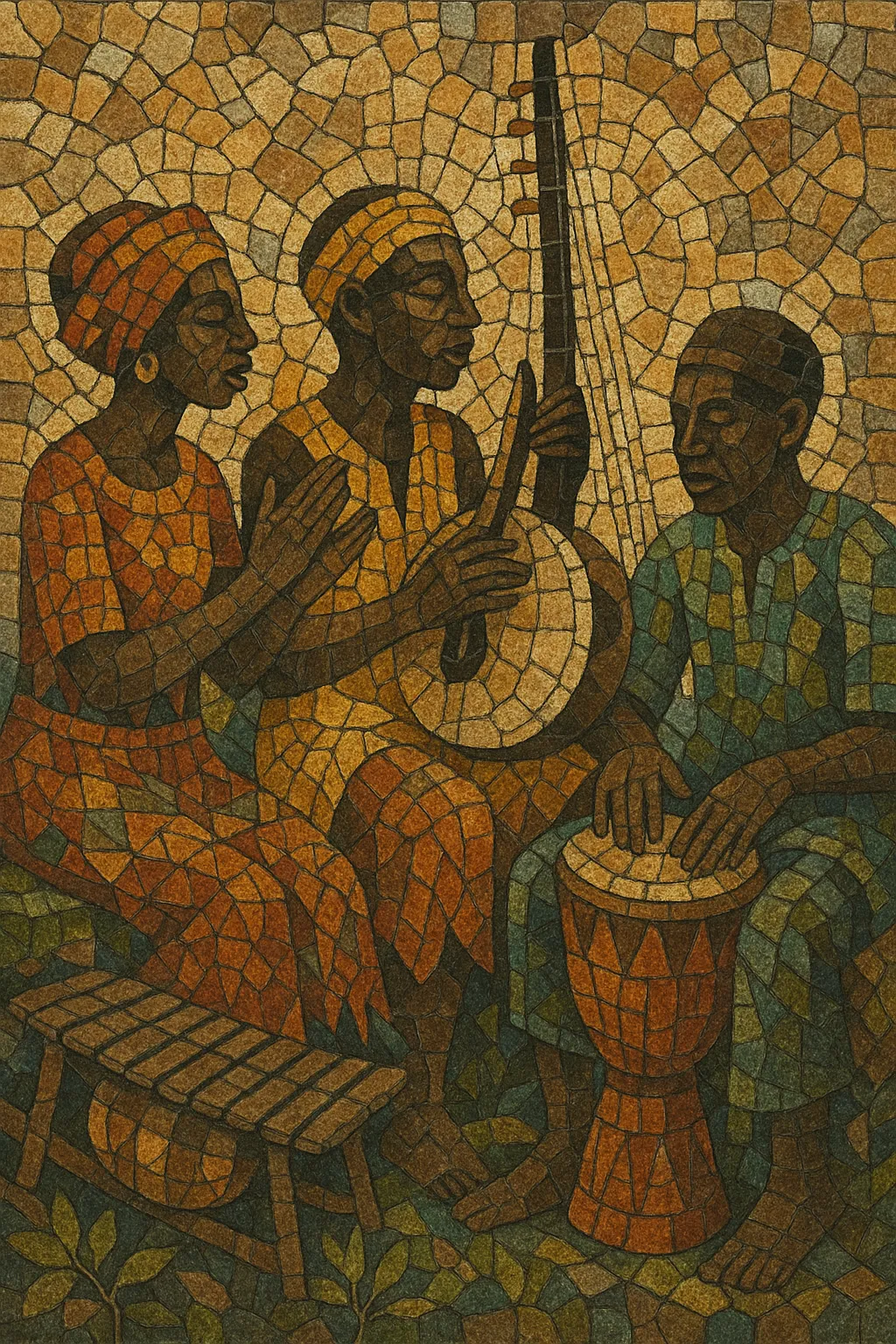African folk music is an umbrella term for traditional, community-rooted musical practices across the African continent. It is characterized by cyclical structures, call-and-response singing, polyrhythms, and a strong integration of music with dance, storytelling, and ritual.
Typical sound worlds include interlocking drum ensembles, handclaps, and idiophones; modal and pentatonic melodies; and timbral techniques such as ululation, vocal hocketing, and overtone-rich instrumental playing. Core instruments vary by region (e.g., West African kora, ngoni, balafon, and talking drum; Southern African mbira and marimba; East African lyres and fiddles; North African frame drums and lutes), but all are used to create layered textures that support social functions—work songs, praise singing, weddings, funerals, and rites of passage.
Because it is transmitted orally, African folk music is fluid and adaptive, preserving deep historical memory while continually reinterpreting styles in response to migration, trade, and religious interchange.
African folk music predates written history, developing as an oral tradition embedded in daily life, ceremony, and governance. Court praise poetry, agrarian work songs, initiation music, and healing rites created a wide ecosystem of genres. Lineages of specialist musicians—such as Mande griots (jeliw)—preserved genealogies and history through song, while communal ensembles fostered participation through dance and call-and-response.
Trans-Saharan trade, Sahelian empires, Bantu migrations, and Swahili coastal commerce facilitated musical exchange. North and the Sahel integrated modal concepts from Islamic and Arabic traditions; East Africa’s coastal cities blended African, Arab, and Persian elements; Central and Southern regions developed intricate polyrhythms and communal dance forms; and Ethiopia/Eritrea sustained distinct ecclesiastical and modal systems.
Colonial-era missionaries, ethnographers, and early recordists (e.g., Hugh Tracey) documented a fraction of the vast repertoire. Their field recordings helped define academic understandings of African rhythm (e.g., cross-rhythm, 12/8 bell timelines) and form, while also introducing these sounds to international audiences.
Nation-building and cultural policy supported folk ensembles and national troupes. Artists adapted folk idioms to new contexts, sometimes amplifying traditional instruments or combining them with guitars and Western harmony. International touring and the rise of “world music” brought griot traditions, mbira music, and isicathamiya choirs to global stages.
Today, custodians and innovators co-exist: community practitioners maintain ceremonial forms, while contemporary artists and ensembles record high-fidelity versions of folk repertoires, collaborate across borders, and fuse folk textures with jazz, rock, and electronic music. Digital archives and local education programs support transmission to new generations.


